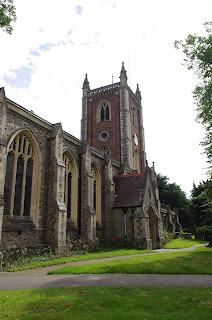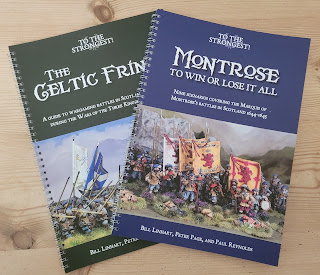Houses of Interest: Hertfordshire
The opening entries in the ECWtravelogue entry for Hertfordshire are very Army Newly Modelled* heavy, and also cover the rise of the Levellers.
But first a little background
October 1647: Charles is imprisoned at Hampton Court; the Army Council has abandoned any attempt at negotiating with Charles as he has refused to engage with them for a number of weeks; and, Cromwell dissociates the Army leadership from the demands of the Levellers.
With this back drop, the Putney Debates begin: the Putney Debates were a series of debates that attempted to resolve the burning question of what to do with the King, a King who refused to negotiate, in order to draw a line under the First Civil War. On one side were the Army Grandees who wanted a solution that included Charles remaining as head of state. On the other, the radicals, most notably the Levellers, who wanted a constitution based upon one man, one vote, biennial Parliaments and a re-organisation of parliamentary constituencies. Throw into the mix a victorious Army Newly Modelled who are on the verge of revolt as Parliament wants to disband the army without first settling pay arrears, and you can understand why the army are ripe for wholesale adoption of the radical ideas of the Levellers.
The Leveller argument being summed up by Colonel Thomas Rainsborough
...for really I thinke that the poorest hee that is in England hath a life to live as the greatest hee; and therefore truly, Sir, I thinke itt's cleare, that every man that is to live under a Governement ought first by his owne consent to putt himself under that Governement; and I do think that the poorest man in England is not at all bound in a strict sense to that Government that he hath not had a voice to put Himself under
Putney Debates record book 1647, Worcester College, Oxford, MS 65
Leveller arguments at Putney begin to become more extreme in their demands, the Leveller pamphlet 'Agreement of the People' is denounced by Parliament, and the Levellers become persona non grata. The army council is replaced, its new members being more moderate; General Fairfax meets with the army to calm their fears and secure their written loyalty to Parliament.
Which is where Hertfordshire comes in...
Corkbush Field, near Ware in Hertfordshire, was the first of three Army rendezvous agreed by the Army Council at the Putney Debates, where the Army was to sign oaths of loyalty.
On the 15th November, General Fairfax arrives at Corkbush where Colonel Rainsborough attempts to present him with a copy of The Agreement of the People. Fairfax ignores him.
Most soldiers in the seven regiments at the rendezvous sign the oath of loyalty; however, Colonel Eyres, Major Scott and other officers who called for the soldiers to support The Agreement were placed under arrest.
Two unauthorised regiments tried, against orders, to attend the Corkbush rendezvous: Colonel Harrison's regiment of horse and Colonel Robert Lilburne's regiment of foot. Soldiers of both regiments arrived at Corkbush with copies of the Agreement of the People and the motto: "England's Freedom, Soldiers' Rights" stuck into their hats. Fairfax himself confronts Harrison's regiment and succeeded in pacifying the unruly troops in face-to-face debate.
Cromwell rode among the ranks of Lilburne's regiment with his sword drawn, ordering the mutineers to tear the papers from their hats. The ringleaders were arrested and three were condemned to death at an improvised court-martial. After casting lots, one of them, Private Richard Arnold, was executed. Surely the basis of the mutiny scene in the Cromwell film.
Corkbrush Field is an unassuming housing estate with no visible record of the momentous events that took place here in November 1647, apart from one road is called Mutiny Close.
Opposite the Corkbrush Field, on the other side of the A119 and railway line, closer to the banks of the River Lea is The King's Meads, which was sold to the town by Charles I in 1627.
St Albans was a Parliamentarian stronghold throughout the First Civil War, with a sizeable garrison. However, the Wars did not trouble the town, until the final throes of the Second Civil War in July 1648.
On the 7th July a small battle took place at Surbiton, 4-500 Royalists squared up against 4-500 Parliamentarians. Not much is known about the battle, or even where it took place; the two forces met in a brief action that ended with the scattering of the Royalists, and notably the death of Lord Francis Villiers, younger son of the first Duke of Buckingham. The routed Royalist horse fleeing through St Albans, where they tried (unsuccessfully) to enlist support for their cause in the Market Place.
Prisoners form this engagement were held at St Peter's Church en route to Bristol for transportation to Barbados.
 |
| St Peter's |
In November 1648 the continuing fallout of the Putney Debates came to St Albans. A committee of Levellers and Independents had met in London, the outcome of these meetings was to recommend the summoning of a convention to revise The Agreement of the People, which would then be presented to Parliament for endorsement, after which a new Parliament could be elected under a new franchise. The committee's suggestions were sent to the Army at St Albans, which the General Council of the Army would adopt this motion to revise the Agreement of The People, publishing their demands as The Army Remonstrance.
 |
| St Alban's Cathedral |
These negotiations took place at St Albans cathedral, General Fairfax and Colonel Ireton lodging at The Bull on Holywell Hill.
 |
| Ryder House (the brick building) stands on the site of The Bull |
 |
| Ireton and Fairfax almost certainly walked from The Bull to the Cathedral via Sumpter Yard |
Old Knoll is reputed to have stayed at Ye Olde Fighting Cocks. A claim, along with its claim to be 'the oldest pub in Britain', are both spurious advertising claims dating from the 1890s.
 |
| The only public recognition of St Alban's role in the Civil Wars. At least they admit that the story of Cromwell staying there is questionable |
Knebworth House, at the time of the Wars a red brick manor house, avoided involvement in the conflict. There are a number of items of Civil War era armour on display in the 'armoury staircase'.
 |
| Knebworth's armoury staircase |
For those of you with a particular interest in Hertfordshire and the Civil Wars, Hertfordshire Record Society publish a fantastic book "The Impact of the First Civil War on Hertfordshire 1642-7", which reproduces a number of documents from the National Archive (many from the infamous SP28 portfolio) concerning the raising of troops from the county. Available here.
* The term 'New Model Army' was a Victorian affectation, they were never called the NMA in the C17th. A number of variations exist, but very definitely not the New Model Army.
Postcodes for SatNavs
Corkbrush Field, Ware Road, Hertford SG13 7EX
The King's Meads, Ware SG12 9XD












Comments
Post a Comment